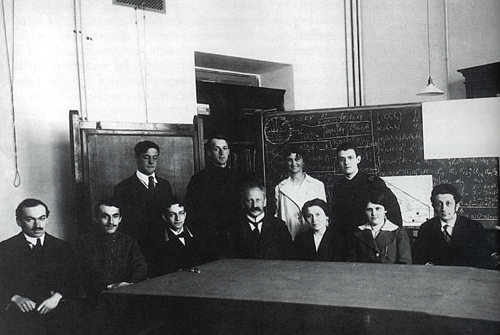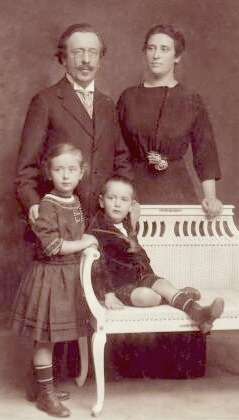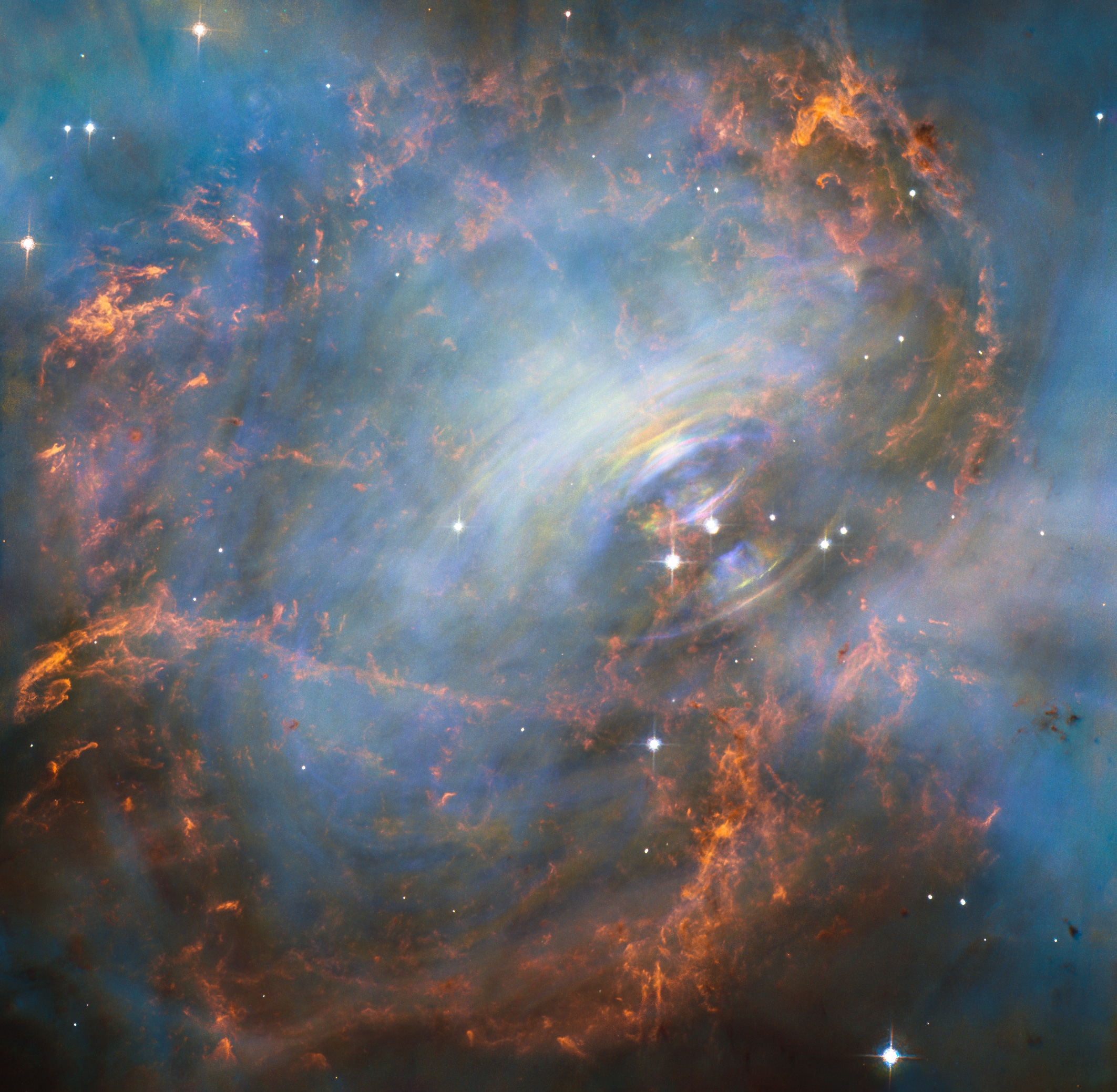|
Quantum Hydrodynamics
In condensed matter physics, quantum hydrodynamics (QHD) is most generally the study of hydrodynamic-like systems which demonstrate quantum mechanical behavior. They arise in semiclassical mechanics in the study of metal and semiconductor devices, in which case being derived from the Boltzmann transport equation combined with Wigner quasiprobability distribution. In quantum chemistry they arise as solutions to chemical kinetic systems, in which case they are derived from the Schrödinger equation by way of Madelung equations. An important system of study in quantum hydrodynamics is that of superfluidity. Some other topics of interest in quantum hydrodynamics are quantum turbulence, quantized vortices, second The second (symbol: s) is a unit of time derived from the division of the day first into 24 hours, then to 60 minutes, and finally to 60 seconds each (24 × 60 × 60 = 86400). The current and formal definition in the International System of U ... and third sound, ... [...More Info...] [...Related Items...] OR: [Wikipedia] [Google] [Baidu] [Amazon] |
Condensed Matter Physics
Condensed matter physics is the field of physics that deals with the macroscopic and microscopic physical properties of matter, especially the solid and liquid State of matter, phases, that arise from electromagnetic forces between atoms and electrons. More generally, the subject deals with condensed phases of matter: systems of many constituents with strong interactions among them. More exotic condensed phases include the superconductivity, superconducting phase exhibited by certain materials at extremely low cryogenic temperatures, the ferromagnetic and antiferromagnetic phases of Spin (physics), spins on crystal lattices of atoms, the Bose–Einstein condensates found in ultracold atomic systems, and liquid crystals. Condensed matter physicists seek to understand the behavior of these phases by experiments to measure various material properties, and by applying the physical laws of quantum mechanics, electromagnetism, statistical mechanics, and other theoretical physics, physic ... [...More Info...] [...Related Items...] OR: [Wikipedia] [Google] [Baidu] [Amazon] |
Bohm Interpretation
Bohm may refer to: Physics * David Bohm, 20th century theoretical physicist who lent his name to several concepts in physics: ** Aharonov–Bohm effect of electromagnetic potential on a particle ** Bohm sheath criterion for a Debye sheath plasma layer ** Bohm diffusion of plasma in a magnetic field ** Bohm interpretation of the configuration of particles ** De Broglie–Bohm theory The de Broglie–Bohm theory is an interpretation of quantum mechanics which postulates that, in addition to the wavefunction, an actual configuration of particles exists, even when unobserved. The evolution over time of the configuration of all ... of quantum mechanics, also known as pilot wave theory Other * Bohm (surname) * Bohm Dialogue, free-flowing group conversation See also * Böhme (other) * Böhm * Boehm * Baum {{disambiguation ... [...More Info...] [...Related Items...] OR: [Wikipedia] [Google] [Baidu] [Amazon] |
Robert E
The name Robert is an ancient Germanic given name, from Proto-Germanic "fame" and "bright" (''Hrōþiberhtaz''). Compare Old Dutch ''Robrecht'' and Old High German ''Hrodebert'' (a compound of '' Hruod'' () "fame, glory, honour, praise, renown, godlike" and ''berht'' "bright, light, shining"). It is the second most frequently used given name of ancient Germanic origin.Reaney & Wilson, 1997. ''Dictionary of English Surnames''. Oxford University Press. It is also in use as a surname. Another commonly used form of the name is Rupert. After becoming widely used in Continental Europe, the name entered England in its Old French form ''Robert'', where an Old English cognate form (''Hrēodbēorht'', ''Hrodberht'', ''Hrēodbēorð'', ''Hrœdbœrð'', ''Hrœdberð'', ''Hrōðberχtŕ'') had existed before the Norman Conquest. The feminine version is Roberta. The Italian, Portuguese, and Spanish form is Roberto. Robert is also a common name in many Germanic languages, including En ... [...More Info...] [...Related Items...] OR: [Wikipedia] [Google] [Baidu] [Amazon] |
Hydrodynamic Quantum Analogs
In physics, the hydrodynamic quantum analogs refer to experimentally-observed phenomena involving bouncing fluid droplets over a vibrating fluid bath that behave analogously to several quantum-mechanical systems. The experimental evidence for diffraction through slits has been disputed, however, though the diffraction pattern of walking droplets is not exactly the same as in quantum physics, it does appear clearly in the high memory parameter regime (at high forcing of the bath) where all the quantum-like effects are strongest. A droplet can be made to bounce indefinitely in a stationary position on a vibrating fluid surface. This is possible due to a pervading air layer that prevents the drop from coalescing into the bath. For certain combinations of bath surface acceleration, droplet size, and vibration frequency, a bouncing droplet will cease to stay in a stationary position, but instead “walk” in a rectilinear motion on top of the fluid bath. Walking droplet systems ha ... [...More Info...] [...Related Items...] OR: [Wikipedia] [Google] [Baidu] [Amazon] |
Quantum Turbulence
Quantum turbulence is the name given to the turbulent flow – the chaotic motion of a fluid at high flow rates – of quantum fluids, such as superfluids. The idea that a form of turbulence might be possible in a superfluid via the quantized vortex lines was first suggested by Richard Feynman. The dynamics of quantum fluids are governed by quantum mechanics, rather than classical physics which govern classical (ordinary) fluids. Some examples of quantum fluids include superfluid helium ( 4He and Cooper pairs of 3He), Bose–Einstein condensates (BECs), polariton condensates, and nuclear pasta theorized to exist inside neutron stars. Quantum fluids exist at temperatures below the critical temperature T_\text at which Bose-Einstein condensation takes place. General properties of superfluids The turbulence of quantum fluids has been studied primarily in two quantum fluids: liquid Helium and atomic condensates. Experimental observations have been made in the two stable isotopes ... [...More Info...] [...Related Items...] OR: [Wikipedia] [Google] [Baidu] [Amazon] |
Pyotr Kapitsa
Pyotr Leonidovich Kapitsa or Peter Kapitza (, ; – 8 April 1984) was a leading Soviet physicist and Nobel laureate, whose research focused on low-temperature physics. Biography Kapitsa was born in Kronstadt, Russian Empire, to the Bessarabian Leonid Petrovich Kapitsa (), a military engineer who constructed fortifications, and to the Volhynian Olga Ieronimovna Kapitsa, from a noble Polish Stebnicki family. Besides Russian, the Kapitsa family also spoke Romanian. Kapitsa's studies were interrupted by the First World War, in which he served as an ambulance driver for two years on the Polish front. He graduated from the Petrograd Polytechnical Institute in 1918. His wife and two children died in the flu epidemic of 1918–19. He subsequently studied in Britain, working for over ten years with Ernest Rutherford in the Cavendish Laboratory at the University of Cambridge, and founding the influential Kapitza club. He was the first director (1930–34) of the Mond Laborat ... [...More Info...] [...Related Items...] OR: [Wikipedia] [Google] [Baidu] [Amazon] |
Lev Landau
Lev Davidovich Landau (; 22 January 1908 – 1 April 1968) was a Soviet physicist who made fundamental contributions to many areas of theoretical physics. He was considered as one of the last scientists who were universally well-versed and made seminal contributions to all branches of physics. He is credited with laying the foundations of twentieth century condensed matter physics, and is also considered arguably the greatest Soviet theoretical physicist. His accomplishments include the independent co-discovery of the density matrix method in quantum mechanics (alongside John von Neumann), the quantum mechanical theory of diamagnetism, the theory of superfluidity, the theory of second-order phase transitions, invention of order parameter technique, the Ginzburg–Landau theory of superconductivity, the theory of Fermi liquids, the explanation of Landau damping in plasma physics, the Landau pole in quantum electrodynamics, the two-component theory of neutrinos, and Landau's ... [...More Info...] [...Related Items...] OR: [Wikipedia] [Google] [Baidu] [Amazon] |
Richard Feynman
Richard Phillips Feynman (; May 11, 1918 – February 15, 1988) was an American theoretical physicist. He is best known for his work in the path integral formulation of quantum mechanics, the theory of quantum electrodynamics, the physics of the superfluidity of supercooled liquid helium, and in particle physics, for which he proposed the parton model. For his contributions to the development of quantum electrodynamics, Feynman received the Nobel Prize in Physics in 1965 jointly with Julian Schwinger and Shin'ichirō Tomonaga. Feynman developed a pictorial representation scheme for the mathematical expressions describing the behavior of subatomic particles, which later became known as Feynman diagrams and is widely used. During his lifetime, Feynman became one of the best-known scientists in the world. In a 1999 poll of 130 leading physicists worldwide by the British journal ''Physics World'', he was ranked the seventh-greatest physicist of all time. He assisted in the Manhatt ... [...More Info...] [...Related Items...] OR: [Wikipedia] [Google] [Baidu] [Amazon] |
Quark–gluon Plasma
Quark–gluon plasma (QGP or quark soup) is an interacting localized assembly of quarks and gluons at Thermodynamic equilibrium#Local and global equilibrium, thermal (local kinetic) and (close to) chemical (abundance) equilibrium. The word ''plasma'' signals that free color charges are allowed. In a 1987 summary, Léon Van Hove pointed out the equivalence of the three terms: quark gluon plasma, quark matter and a new state of matter. Since the temperature is above the Hagedorn temperature—and thus above the scale of light u,d-quark mass—the pressure exhibits the relativistic Stefan–Boltzmann law, Stefan–Boltzmann format governed by temperature to the fourth power ( T^) and many practically massless quark and gluon constituents. It can be said that QGP emerges to be the new phase of strongly interacting matter which manifests its physical properties in terms of nearly free dynamics of practically massless gluons and quarks. Both quarks and gluons must be present in conditions ... [...More Info...] [...Related Items...] OR: [Wikipedia] [Google] [Baidu] [Amazon] |
Neutron Star
A neutron star is the gravitationally collapsed Stellar core, core of a massive supergiant star. It results from the supernova explosion of a stellar evolution#Massive star, massive star—combined with gravitational collapse—that compresses the core past white dwarf star density to that of Atomic nucleus, atomic nuclei. Surpassed only by black holes, neutron stars are the second smallest and densest known class of stellar objects. Neutron stars have a radius on the order of and a mass of about . Stars that collapse into neutron stars have a total mass of between 10 and 25 solar masses (), or possibly more for those that are especially rich in Metallicity, elements heavier than hydrogen and helium. Once formed, neutron stars no longer actively generate heat and cool over time, but they may still evolve further through Stellar collision, collisions or Accretion (astrophysics), accretion. Most of the basic models for these objects imply that they are composed almost entirely o ... [...More Info...] [...Related Items...] OR: [Wikipedia] [Google] [Baidu] [Amazon] |
Helium-4
Helium-4 () is a stable isotope of the element helium. It is by far the more abundant of the two naturally occurring isotopes of helium, making up about 99.99986% of the helium on Earth. Its nucleus is identical to an alpha particle, and consists of two protons and two neutrons. Helium-4 makes up about one quarter of the ordinary matter in the universe by mass, with almost all of the rest being hydrogen. While nuclear fusion in stars also produces helium-4, most of the helium-4 in the Sun and in the universe is thought to have been produced during the Big Bang, known as " primordial helium". However, primordial helium-4 is largely absent from the Earth, having escaped during the high-temperature phase of Earth's formation. On Earth, most naturally occurring helium-4 is produced by the alpha decay of heavy elements in the Earth's crust, after the planet cooled and solidified. When liquid helium-4 is cooled to below , it becomes a superfluid, with properties very different from ... [...More Info...] [...Related Items...] OR: [Wikipedia] [Google] [Baidu] [Amazon] |
Helium-3
Helium-3 (3He see also helion) is a light, stable isotope of helium with two protons and one neutron. (In contrast, the most common isotope, helium-4, has two protons and two neutrons.) Helium-3 and hydrogen-1 are the only stable nuclides with more protons than neutrons. It was discovered in 1939. Helium-3 atoms are fermionic and become a superfluid at the temperature of 2.491 mK. Helium-3 occurs as a primordial nuclide, escaping from Earth's crust into its atmosphere and into outer space over millions of years. It is also thought to be a natural nucleogenic and cosmogenic nuclide, one produced when lithium is bombarded by natural neutrons, which can be released by spontaneous fission and by nuclear reactions with cosmic rays. Some found in the terrestrial atmosphere is a remnant of atmospheric and underwater nuclear weapons testing. Nuclear fusion using helium-3 has long been viewed as a desirable future energy source. The fusion of two of its atoms would be aneut ... [...More Info...] [...Related Items...] OR: [Wikipedia] [Google] [Baidu] [Amazon] |






